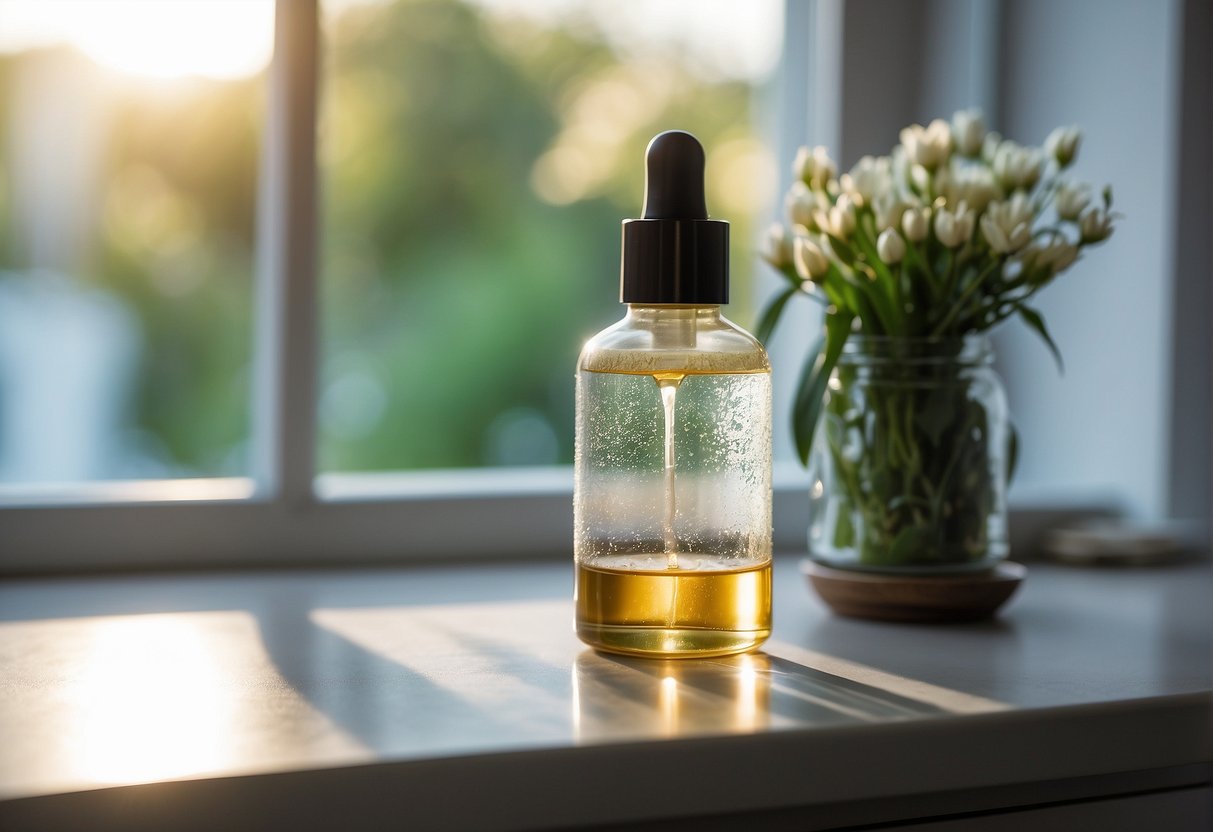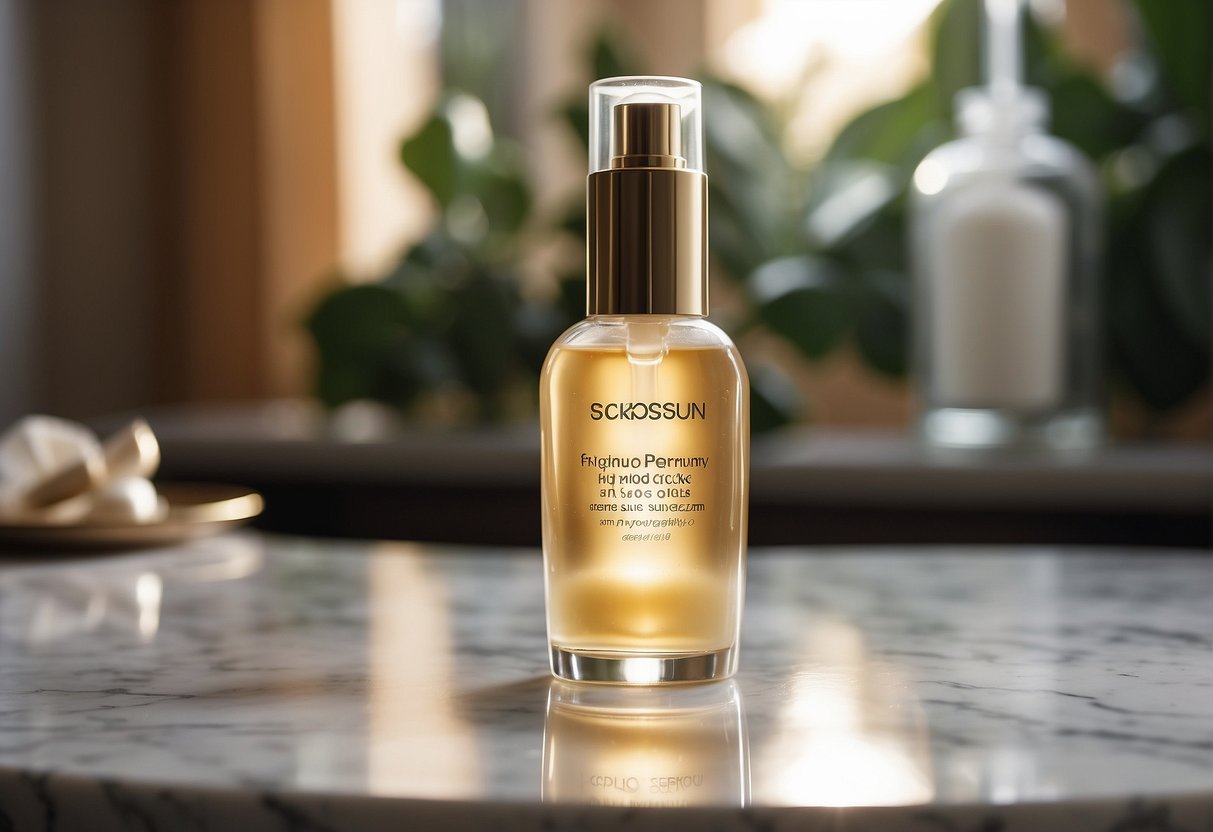Incorporating serums into your daily skincare regimen can significantly enhance the efficacy of your routine.
Serums, packed with concentrated active ingredients, are designed to penetrate deeply into the skin, targeting specific concerns such as wrinkles, dullness, and hyperpigmentation.
For optimal results, these potent treatments should be applied after cleansing and toning but before moisturizing.
This sequence allows the serum to deliver its benefits most effectively, as the moisturizer seals in the serum's components and ensures the skin remains hydrated.

Understanding the composition of serums and moisturizers sheds light on their synergistic effects.
Serums typically have a lighter, fast-absorbing formula that permits the active ingredients to absorb quickly into the skin's layers, where they can work most efficiently.
Moisturizers, on the other hand, are generally thicker and provide a barrier that locks in moisture and serum benefits.
The moisturizer's occlusive properties prevent water loss and protect the skin from environmental factors, ensuring the serum's ingredients are maximized.
Key Takeaways
- Applying serum before moisturizer can significantly boost a skincare routine's effectiveness.
- Serums deliver concentrated active ingredients deeply into the skin, which moisturizers then seal in.
- The correct layering of skincare products is crucial for protection and enhancing overall skin health.
The Science of Serums

Serums are designed to deliver high concentrations of active ingredients to the skin. Understanding these ingredients, how serums work, and the different types available allows users to select the most appropriate serum for their skincare routine.
Understanding Active Ingredients
Active ingredients in serums target specific skin concerns.
Hyaluronic acid aims to hydrate the skin by retaining moisture, while vitamin C serves as a potent antioxidant to protect the skin from free radicals and brighten the complexion.
Retinol, another key ingredient, promotes skin renewal and collagen production. Meanwhile, niacinamide works to improve skin elasticity and reduce inflammation.
- Hyaluronic Acid: Hydration
- Vitamin C: Antioxidation, Brightening
- Retinol: Skin Renewal
- Niacinamide: Elasticity, Anti-Inflammatory
Serum Penetration and Absorption
The small molecules in serums allow them to absorb deeply into the skin. This deep penetration is crucial for delivering active ingredients where they can be most effective.
Factors such as pH, molecular size, and serum base influence the absorption rate.
- pH: Optimal for skin penetration
- Molecular Size: Small for deeper absorption
- Serum Base: Affects penetration and layering
Types of Serums: Water-Based vs Oil-Based
Serums can be categorized into water-based and oil-based serums, each with distinctive characteristics suited for different skin types.
-
Water-Based Serums:
- Lighter in texture
- Ideal for oily or acne-prone skin
- Contain hyaluronic acid and vitamin C
-
Oil-Based Serums:
- Richer and more moisturizing
- Suitable for dry or mature skin
- Often contain antioxidants and retinol
Choosing between water-based and oil-based serums depends on individual skin needs and the desired outcome regarding hydration and treatment of specific skin concerns.
Layering Your Skincare Products
Proper layering of skincare products enhances their effectiveness, ensuring that each product can penetrate the skin and deliver optimal benefits.
Order of Application
The order in which skincare products are applied is crucial. They should generally be applied from the thinnest to the thickest consistency to allow for proper absorption. Here's a straightforward guide:
- Cleansers and Toners: This initial step clears the skin of impurities and prepares it for further treatment.
- Serums: These are lightweight and packed with active ingredients. They should be applied after cleansing and toning.
- Moisturizers: With a thicker consistency, moisturizers are used after serums to seal in moisture and the benefits of preceding products.
- Occlusives and Sunscreens: The last layer should consist of products that provide a barrier, such as occlusive creams and sun protection.
Maximizing the Benefits of Your Moisturizer
To ensure that moisturizers are as effective as possible, follow these steps:
- Apply to Damp Skin: Moisturizers work best when skin is slightly damp, as this helps the product to penetrate deeply.
- Use the Right Amount: Typically, a pea-sized amount is sufficient. Excess can prevent proper absorption.
- Warm it Up: Before application, warming the moisturizer in the hands can enhance penetration and application.
- Be Gentle: Apply with a soft touch and in an upward motion to encourage absorption and support skin elasticity.
Addressing Skin Concerns
When incorporating serums into a skincare routine, it's essential to target specific skin issues. The right serum used before moisturizer can effectively address a range of concerns from acne to signs of aging.
Combating Acne and Acne Scars
For individuals with acne-prone skin, serums containing salicylic acid or niacinamide help to minimize breakouts by unclogging pores and reducing inflammation. They also assist in fading acne scars and hyperpigmentation, leading to a more even skin tone.
- Key Ingredients: Salicylic acid, Niacinamide
- Benefits: Reduces pore blockages, soothes inflammation, lightens dark spots
To enhance healing and diminish scars, look for serums rich in vitamin C and retinoids that increase collagen production, repairing the skin and mitigating the appearance of scars.
Soothing Dry and Sensitive Skin
Serums packed with hydrating ingredients like hyaluronic acid and glycerin provide deep hydration to dry skin types, without causing irritation to sensitive skin. They can draw moisture into the skin and lock it in, preparing the skin for the next step of moisturizing.
- Key Ingredients: Hyaluronic acid, Glycerin
- Benefits: Enhances hydration, calms sensitivity, strengthens skin barrier
For sensitive skin, serums with soothing components such as aloe vera or chamomile can help to calm irritation and redness, making the skin more resilient and less prone to dryness and discomfort.
Preventing Signs of Aging
Addressing visible signs of aging, serums with antioxidants, peptides, and retinol can be pivotal. They work to protect the skin from environmental damage, stimulate collagen production, and accelerate cellular turnover.
- Key Ingredients: Antioxidants, Peptides, Retinol
- Benefits: Protects against damage, boosts collagen, reduces fine lines and wrinkles
Regular use of these serums can lighten dark spots and smooth out fine lines for a more youthful appearance. It's crucial to incorporate serums with these active ingredients as a preventative measure, even before visible signs of aging appear.
Protecting and Enhancing Skin Health
Optimal skin health hinges on both protection from harmful elements and adherence to expert recommendations. Integrating serum and moisturizer effectively plays a significant role in this regimen.
The Role of Sunscreen in Skincare
In any skincare routine, sunscreen is indispensable. It serves as a barrier, shielding the skin from harmful UV rays.
Dermatological research consistently demonstrates that daily use of sunscreen with sufficient SPF not only prevents sunburn but mitigates the risk of skin cancer and premature aging.
Most dermatologists urge the application of sunscreen as a fundamental step, post-serum, and pre-moisturizer.
- SPF recommendation: At least SPF 30
- Application frequency: Every two hours when exposed to sun
- Quantity: About one ounce to cover all sun-exposed skin
There is evidence suggesting that certain chemical sunscreens can have side effects, particularly on sensitive skin. Individuals are encouraged to select products approved by a board-certified dermatologist to minimize these concerns.
Dermatologist Recommendations
Board-certified dermatologists advocate for a tailored skincare routine. They recommend using serums and moisturizers to strengthen the skin barrier.
- Serum application: To apply on clean skin, targeting specific concerns like hydration or pigmentation.
- Moisturizer: To use after a serum for sealing in benefits and maintaining the skin's hydration levels.
It's crucial for individuals to consult with their dermatologist to find products that are compatible with their skin type. Dermatologists might recommend products with active ingredients that have been rigorously researched for efficacy and safety to support skin health.




